Giving Solar Power’s Mortal Enemies a Dusting Without Wasting Water [Hackaday]
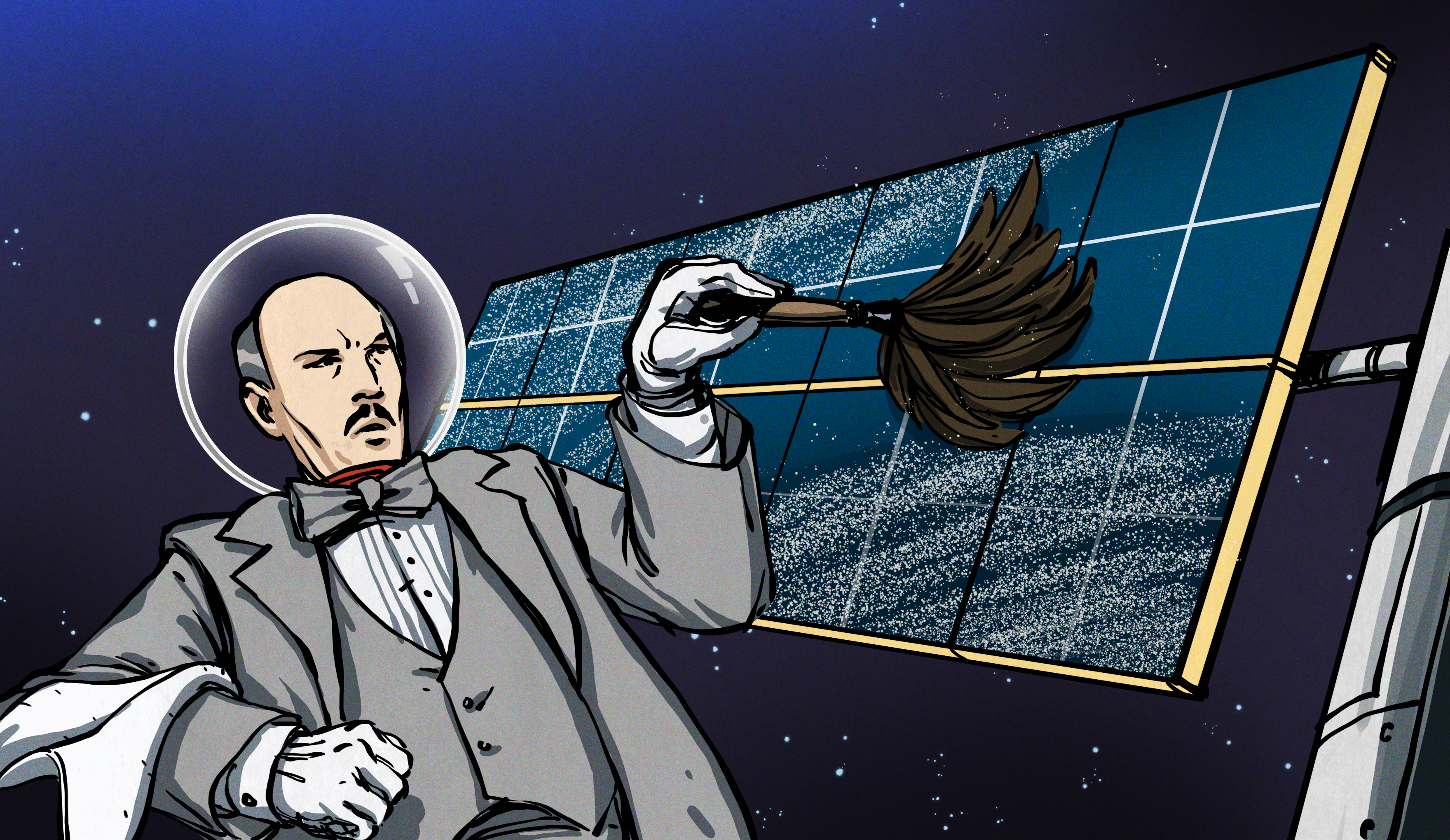
A prerequisite for photovoltaic (PV) and concentrated solar power (CSP) technologies to work efficiently is as direct an exposure to the electromagnetic radiation from the sun as possible. Since dust and similar particulates are excellent at blocking the parts of the EM spectrum that determine their efficiency, keeping the panels and mirrors free from the build-up of dust, lichen, bird droppings and other perks of planetary life is a daily task for solar farm operators. Generally cleaning the panels and mirrors involves having trucks drive around with a large water tank to pressure wash the dirt off, but the use of so much water is problematic in many regions.
Keeping PV panels clean is also a consideration on other planets than Earth. So far multiple Mars rovers and landers have found their demise at the hands of Martian dust after a layer covered their PV panels, and Moon dust (lunar regolith) is little better. Despite repeated suggestions by the peanut gallery to install wipers, blowers or similar dust removal techniques, keeping particulates from sticking to a surface is not as easy an engineering challenge as it may seem, even before considering details such as the scaling issues between a singular robot on Mars versus millions of panels and mirrors on Earth.
There has been research into the use of the electrostatic effect to repel dust, but is there a method that can keep both solar-powered robots on Mars and solar farms on Earth clean and sparkling, rather than soiled and dark?
Defining The Problem
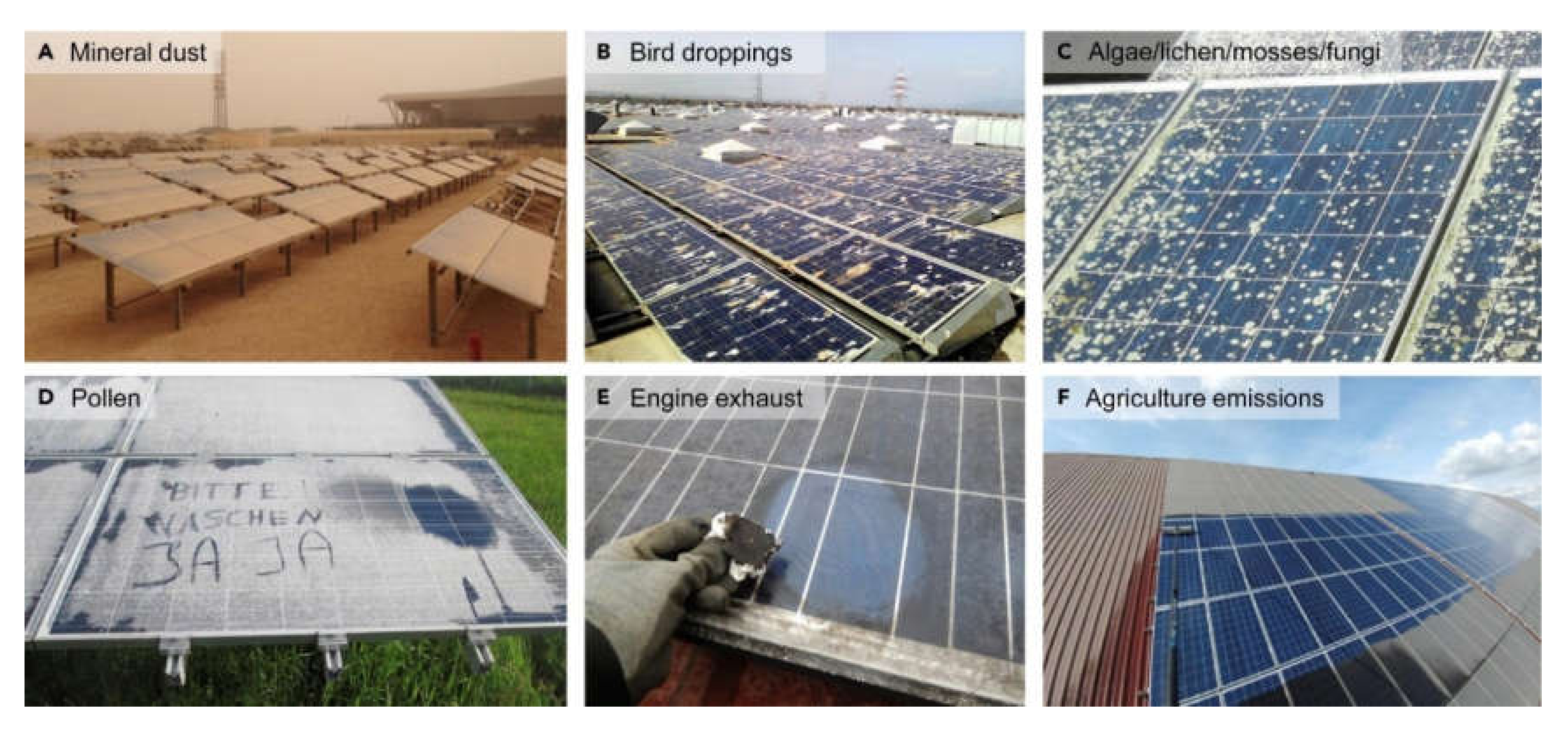
Surfaces on Earth as well as on other planetary bodies, including Earth’s Moon tend to get covered with particulate matter through a variety of mechanisms, resulting in a phenomenon referred to as ‘soiling‘. While on the Moon there aren’t many mechanisms for this – in the absence of a significant atmosphere and birds – beyond mechanical disturbances, on Mars and Earth particulate matter is constantly transported by the atmosphere and deposited through phenomena such as wind and dust devils.
Although the same atmospheric motion can also remove part of the thus deposited material – as has happened repeatedly to solar-powered Mars rovers from passing dust devils – much of the material is retained on the surface, through static charges, absorption of moisture and other mechanisms that are strong enough to prevent gravity and a gentle breeze from removing it. On Earth there’s the added challenge of so-called pioneer species, which mostly include lichen.
Wherever there’s sufficient moisture, lichen are likely to be found on any available surface that’s not already populated by other species. They can find purchase on surfaces ranging from soil, to bark and rock, as well as the glass covering PV solar panels, making lichen growth on these panels especially a problem in (semi-)tropical and moderate climates. Meanwhile in desert regions mineral dust is the most prominent soiling issue, which happen to be also the regions where solar farms are the most efficient and thus making electrostatic and similar self-cleaning panel technologies
As for lichen, algae and similar, here the solution seems to be either elbow grease and good scrubbing of affected panels before the glass surface is too far damaged, or experimental coatings that are supposed to inhibit the growth of these pioneer species. As someone famous once said, life finds a way. Beyond biocides and similar antifouling mechanisms, there does not seem to be a lot that can be done against the growth of these biofilms, but fortunately they develop much slower than a solid coating of dust.
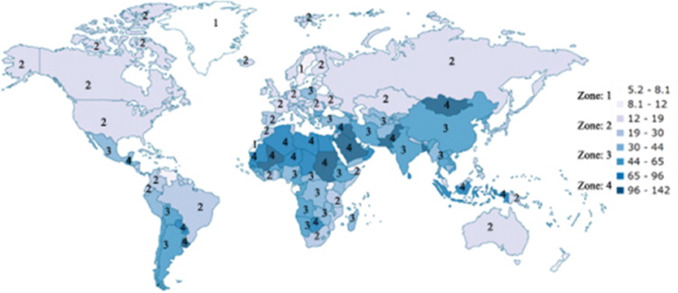
The loss of power output from PV solar panels due to soiling with mineral dust is quite dramatic. For example, a 2018 paper by Cordero and colleagues in Scientific Reports which studied the impact of dust on PV panels in the Atacama Desert noted that with no cleaning the panels lost up to 39% of the output after a year, which improved with panels located closer to regions where it rained more frequently.
In desert regions with more severe mineral dust storms, dust accumulation on PV panels is a very rapid process, as noted by Sreedath Panat and colleague in a 2022 paper in Science Advances (MIT press release) in which they demonstrate an electrostatic repelling method for PV panels. In some regions (with dust accumulation rates close to 1 g/m2 per day) panel output can be reduced by as much as 50% after a month, making regular cleaning (multiple times a month) with pressurized water jets essential. Although mechanical cleaning means are also possible, these risk scratching and otherwise damaging the panel’s glass, which would negatively affect performance in a more permanent manner than dust would.
Wiping Away Problems
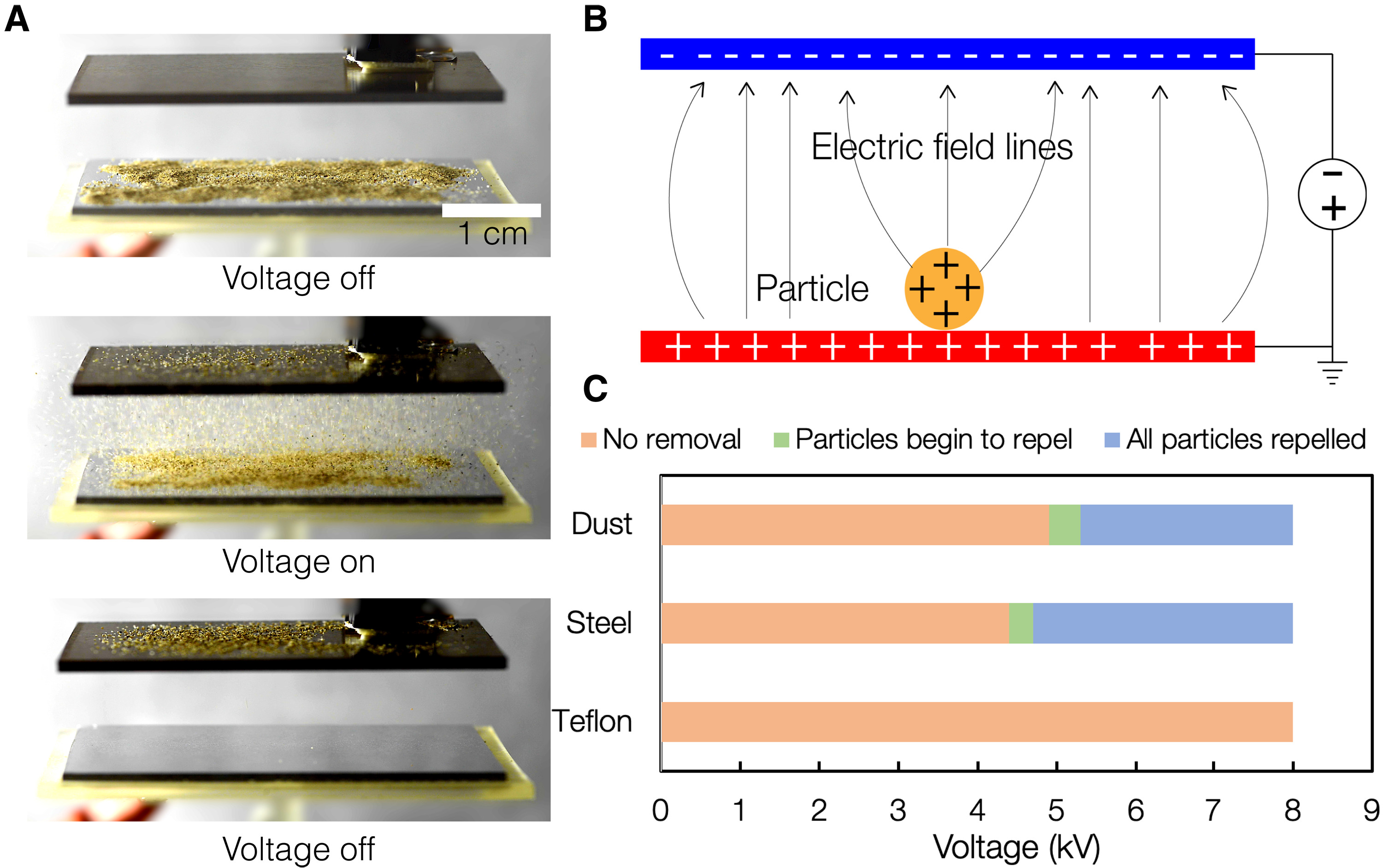
The proposed solution by Sreedath Panan et al. involves a contraption that moves perpendicular over the surface to be cleaned of mineral dust, not unlike picking up bits of paper with a statically charged balloon. An important detail noted in the paper is that the mineral dust (30 – 75% consisting out of silica) is electrically insulating by itself, but becomes conductive when it adsorbs moisture, which allows it to be charged when is exposed to an electrode.
In the experimental setup using a desert dust analog (Arizona Test Dust, from Powder Technology Inc.) the two important factors were the moisture content of the dust and the size of the particles, with around 30% relative humidity required. Depending on the size of the particles, PV panel output was recovered from around 20% (dust-covered) to 80 – 95% (cleaned). Here the 30 μm sized particles were the hardest to remove, leading to the lowest recovery of lost output power.
Using this method, cleaning using water jets would not be rendered unnecessary, but it’s conceivable that the number of cleanings could be reduced, assuming this small-scale prototype can be adapted to a version that’d work with large-scale farms. Each panel would likely need to have its own plate like this, as well as an equivalent to the aluminium-doped zinc oxide (AZO) coating used as the electrode on the panel’s glass. Here the extra cost of a mechanical system and custom panel coating would need to compete economically with a water truck and a handful of blokes to handle the pressure washer.
Out Of This World
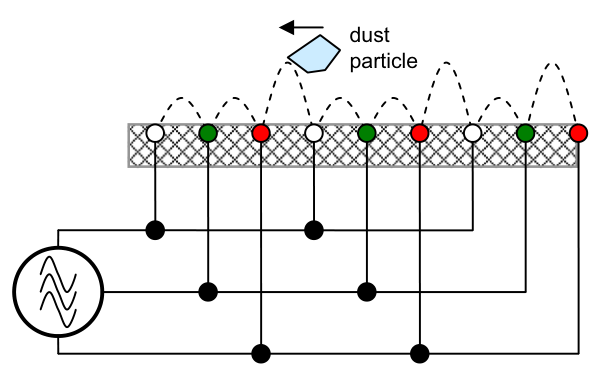
Attentive readers may have noticed a slight issue with the electrostatic method proposed by Sreedath Panan et al., in that it requires the presence of moisture to work. This is a property that would make both lunar and Mars researchers overjoyed if true, but in the absence of moisture a different mechanism is possible in the form of both electrostatic and dieelectrophoretic forces as researched by C.I. Calle et al. (2011, PDF) at NASA with a focus on lunar and Martian expeditions.
Rather than Arizona’s finest, these experiments were run with a Martian (JSC Mars-1) and lunar (JSC-1A & JSC-1AF) dust analogs in a high vacuum, showing the experimental PV panels to be able to shed most of the dust after a few minutes, recovering about 90% of the output. After this continued application of power to the system the output power continued to gradually improve.
As noted by Calle et al., this electrodynamic dust removal technique is not new, but was first developed as an ‘electric curtain’ concept by F.B. Tatom et al. at NASA, with additional research performed at the University of Tokyo in the 1970s. So far this technology has not been applied to PV panels or other surfaces (e.g. optical lenses) on operational missions such as the Mars rovers. At its core it’s a fairly simple system that creates a traveling wave by having a series of parallel electrodes connected to a three-phase alternating current source.
Because here the (transparent) electrodes are placed on top of the PV panel or fabric (see 2008 paper for additional details), there is no mechanical system requirement and little additional space is required. This makes it highly suitable for space missions where weight and space are at a premium and mechanical elements are problematic at best. Whether such a system could also be adapted for use on PV solar panels and solar mirrors on Earth is still an open question, but with some luck future solar-powered rovers on Mars will be able to shake off the dust on their PV panels if this technology gets approved on future missions.

![giving-solar-power’s-mortal-enemies-a-dusting-without-wasting-water-[hackaday]](https://i0.wp.com/upmytech.com/wp-content/uploads/2023/08/137933-giving-solar-powers-mortal-enemies-a-dusting-without-wasting-water-hackaday-scaled.jpg?resize=800%2C445&ssl=1)